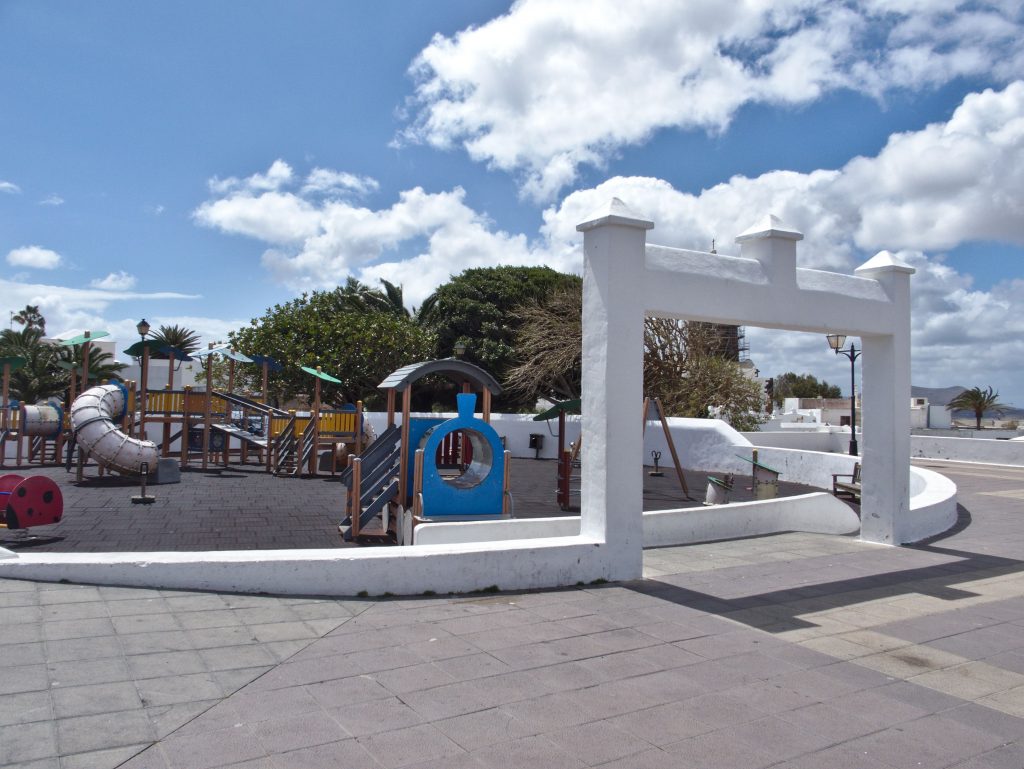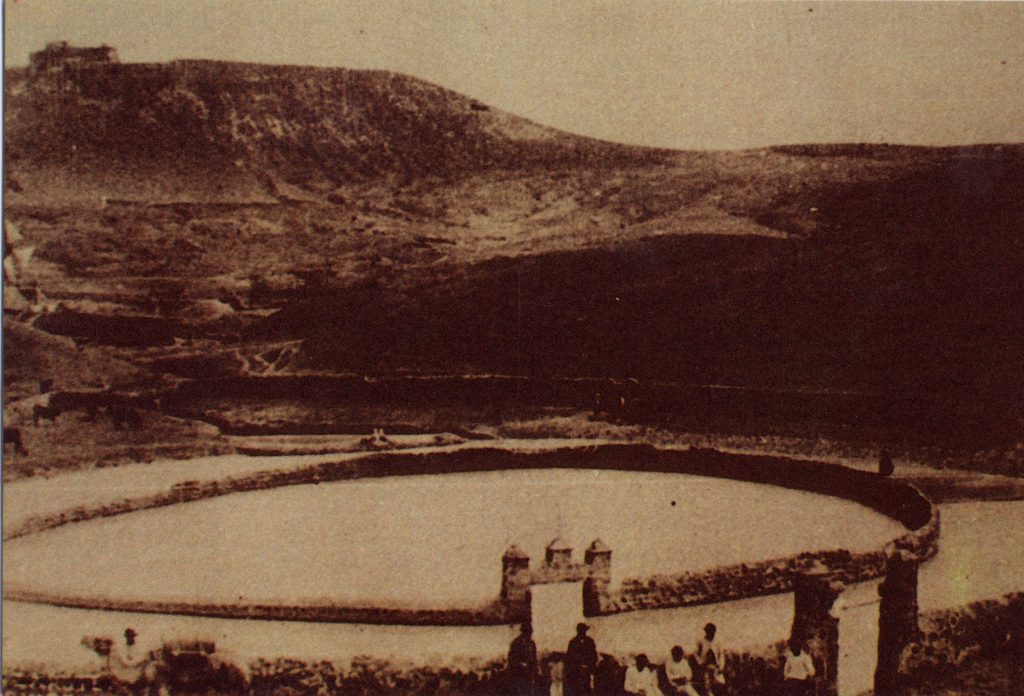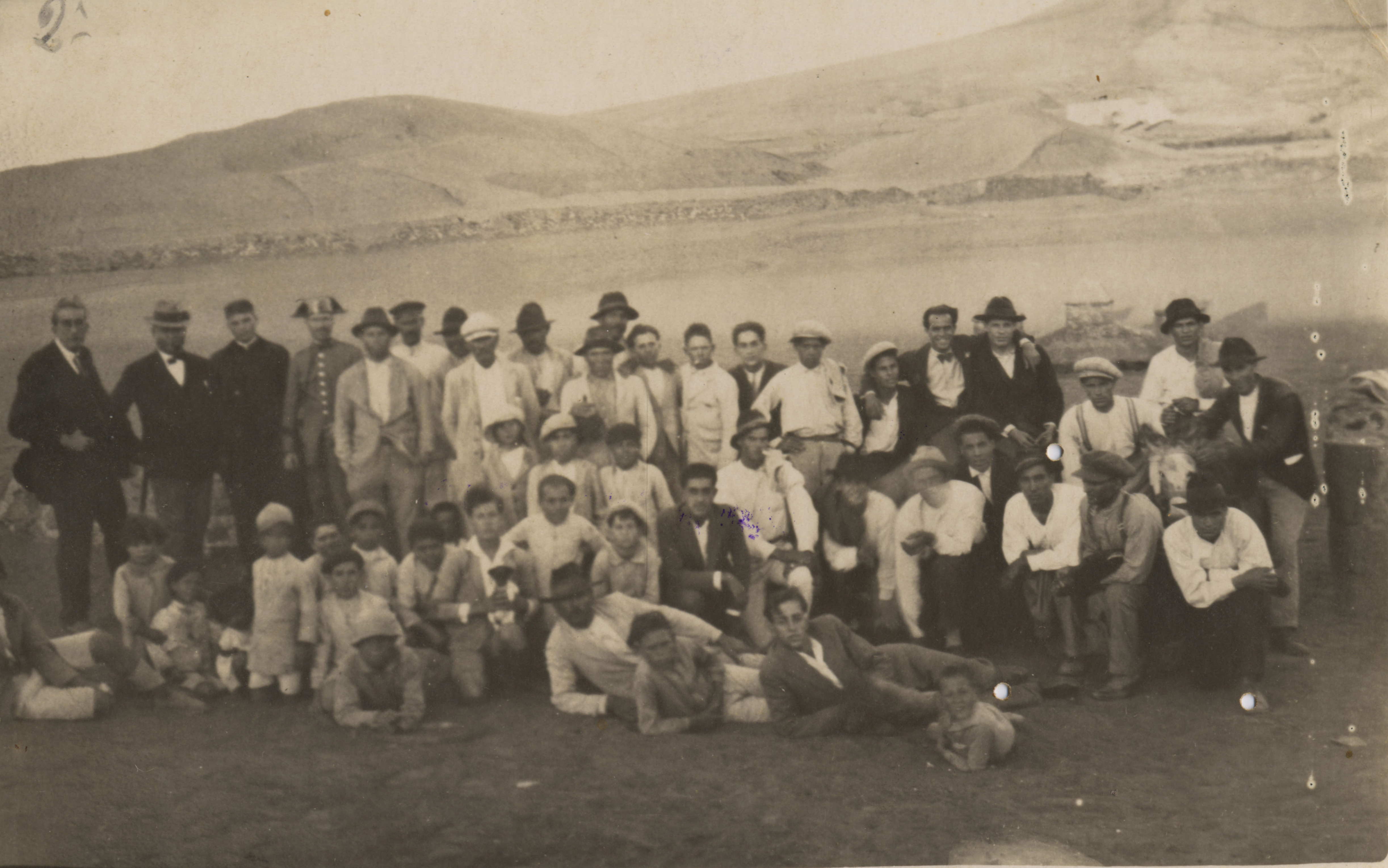
Parque de la Mareta in 2016. This playground for the children was built upon the old Gran Mareta’s site at Teguise, Lanzarote (source: PROYECTO TARHA).
The Spanish we speak in the Canary Islands owes its exceptional wealth not only to the contributions of the different languages that make it up –fundamentally Castilian, Portuguese, French and Island Tamazight– but also to the preserving action that the relative physical isolation has given to the Archipelago for centuries, unfortunately put in danger in relatively recent times by a phenomenon that, in personal opinion, we tend to interpret as the result of a desire for recognition and modernity in some misunderstood ways.
It is precisely this preservation that has allowed the survival of numerous archaesms that have disappeared, in whole or in part, from their original languages and, as an example, today we want to offer a modest and brief study of a term closely linked to the field of island agriculture and society. We refer to the word mareta.
What is a mareta?
In the Canaries, a mareta is, in essence, an artificial pool aimed to collect rainwater. As with many of our words, this meaning does not appear in the entry that the RAE Dictionary shows about the term, but it does, as could be expected, in the Diccionario Básico de Canarismos by the Academia Canaria de la Lengua, in which seven meanings are offered. Of these we are particularly interested in the first one, corresponding to the islands of Lanzarote and Fuerteventura, because it is the oldest: a large hollow made on the ground to collect rainwater.
Indeed, in these two islands practically devoid of natural water sources, there were maretas in their old constructive form, being the most famous the Great Mareta of Teguise. We will not go into the physical and operative details of these engineering works, as described by the Official Chronicler of that town, Francisco Hernández Delgado, in his essay La Gran Mareta de Teguise, since what we are interested in this occasion is elucidating the etymology of that word.

Teguise’s mareta between 1890-1895 (source: Archivo de fotografía histórica de Canarias – Fedac – Cabildo de Gran Canaria).
The first known news about the word mareta appeared during the sixteenth century offered to us by authors such as Brother Juan de Abreu Galindo, Leonardo Torriani, Francisco López de Ulloa and Andrés Bernáldez, among others, as well as recorded in public documents contemporaneous with these historians. In any case, these names circumscribe the use of the word that occupies us to the geographic scope of the island of Lanzarote, although Bernáldez extends it to El Hierro. On the other hand, there is no doubt that the popularity and specificity of the term ended up making it exportable to the other islands, although under different meanings matching the semantic value of water collection, as evidenced not only by material heritage but also by place names.
A Gallicism or just a diminutive?
There are at least two schools of thought about the etymology of the word mareta:
- The one that defends that it is a diminutive of the Castilian word mar (sea).
- The one that postulates that it could be a Gallicism introduced in the Archipelago by the Norman conquerors at the beginning of fifteenth century.
The first option we think is self-explanatory enough, being the etymology proposed by Professors Cristóbal Corrales and Dolores Corbella in their Diccionario Histórico del Español de Canarias (DHECan), while the second one seems to require a somewhat more detailed analysis, not quite extensive or rigorously formal, given our practically null knowledge in philological matters, so we are trying only to help shed a little more light on this topic.
We know for sure that Maciot de Béthencourt, nephew of Norman conqueror Jehan IV de Béthencourt and Deputy Governor of Lanzarote, gave the order in 1447 that the amounts of the fines imposed on the island were bound to the repairment of the two mares at Famagui [sic] . It is not difficult to identify these mares with maretas, although the place name Famagui is absolutely unknown to us, even when we might relate it to Güime village, where according to a public document dated 1575 the presence of two of these hydraulic constructions were witnessed.
A priori, it seems reasonable to consider las mares as a Castilian expression exclusively, since the substantive mar admits equally male and female determinants, and thus, for example, King Henry IV of Castile speaks in 1468 of las mis mares de España –my seas of Spain– in a revocation letter studied by Professor Antonio Rumeu de Armas. Nevertheless, certain clues make plausible that we are really before a Gallicism, specifically:
- Maciot de Béthencourt was French; most likely a Norman.
- The first maretas were built on the islands lacking natural water sources: Lanzarote, Fuerteventura and, if we believe Bernáldez, El Hierro. And precisely these three were the islands conquered by Béthencourt’s expeditions.
- French expression la mare (pl. les mares) refers to a small water area, stuck in a hollow, either natural or artificial, of shallow depth –from this definition we could infer in Spanish the words charca (pond) and charco (puddle) as part of the same semantic field– or also to a lake, according to ancient Anglo-Norman texts. On the other hand, nothing prevents a partial conversion to Castilian of the French plural that would derive in las mares.
Deep knowledge of the French language is not required at all to deduce that a possible diminutive of mare would be marette, which directly connects with the word mareta. However, finding historical evidence of the use of this diminutive in our context is not trivial.
Let us start by noting that the word mare in its water meanings is an archaism seldom used in modern French, which instead uses the words étang, flaque and lac to refer to a pool, a puddle and a lake, respectively; but also that, in any case, the modern diminutive would be petit mare. However, a simple search on the Internet reveals the presence of the word marette forming part, in addition to toponymy, of the name of some lodgings in French territory, as a surname, and even as a popular name for certain types of electrical connectors whose trademark is, in fact, Marrette. Let us add that the silence of most dictionaries consulted makes it unfeasible to link, if not unequivocally, at least with sufficient strength, this word with our Canarianism.
Fortunately, Professor Marcial Morera Pérez, in his Diccionario Histórico-Etimológico del Habla Canaria, records the existence of the word marette in ancient French, following authors such as Professor Frédéric-Eugène Godefroy, who attests that the meaning of that word as equivalent to petite mare, belongs to the Pays de Bray, a small region of France which is very significantly located only about fifty kilometers from Grainville-la-Teinturière, home manor of the first Lord of the Isles of Canaria, above mentioned Jehan IV de Béthencourt.

Some Teguise residents posing by the mareta between 1920-1925 (source: Archivo de fotografía histórica de Canarias – Fedac – Cabildo de Gran Canaria)
A literary proof
After some research, we have found in classical literature an eloquent demonstration of the existence of the word marette which also allows us to conclude that:
- it is, in fact, a diminutive of mare.
- it refers to a small area of impounded water.
- it has disappeared from common French, at least since the nineteenth century.
We find this beautiful proof in the novel Ange Pitou written by Alexandre Dumas and published in 1850. In the third chapter of this work, set in the French Revolution of 1789, we find the next and enlightening dialogue between the protagonist, a bird-hunting fan, and his aunt, who asks him for the meaning of a word that she, despite her advanced age, confesses to ignore:
–Qu’est-ce que cela, la marette ?
Pitou regarda sa tante d’un air étonné : il no pouvait pas comprendre qu’il existât au monde une éducation assez négligée pour ne pas savoir ce que c’était que la marette.
–La marette ? dit-il. Parbleu ! c’est la marette.
–Oui; mais moi, monsieur le dróle, je ne sais pas ce que c’est que la marette.
Comme Pitou était plein de miséricorde pour toutes les ignorances :
–La marette, dit-il, c’est une petite mare : il y en a comme cela une trentaine dans la forêt ; on met des gluaux tout autour, et quand les oiseaux viennent pour boire, comme ils ne connaissent pas cela, les imbéciles ! ils se prennent.
Let us try a free translation of this fragment:
–What is this thing, la marette?
Pitou looked at his aunt with astonishment: he could not understand that there existed in the world an education so negligent as not to know what la marette was.
–Did you say la marette? For God’s sake! It is la marette.
–Yes; but I, you funny sir, do not know what la marette is.
As Pitou was plenty of mercy for all ignorants:
–La marette is a small pool: there are about thirty of them in the forest; traps are set around them and when birds come to drink, as they know nothing, them fools, they get trapped.
But in the second chapter Dumas himself had already explained the meaning of the term by a footnote which shows that the word was strange even for the French-speaking readers of the nineteenth century.
It will not be difficult for our visitors, specially Spanish-speaking ones, to find out the reason why we preferred to provide a free translation of this text instead of using either of the existing Spanish or English editions, and that is because the adaptation of the word marette in them is pool, pond or the like; distortions that explain in part that this valuable fragment has gone unnoticed by Canarian lexicologists. In fact, even the very footnote in which Alexandre Dumas illustrates to his readers the meaning of such a Canarianism –even being an adopted one– has been omitted in all the versions of this classic but the French ones.
Antonio M. López Alonso

2 comments on “Mareta: the elusive origin of an imported word”